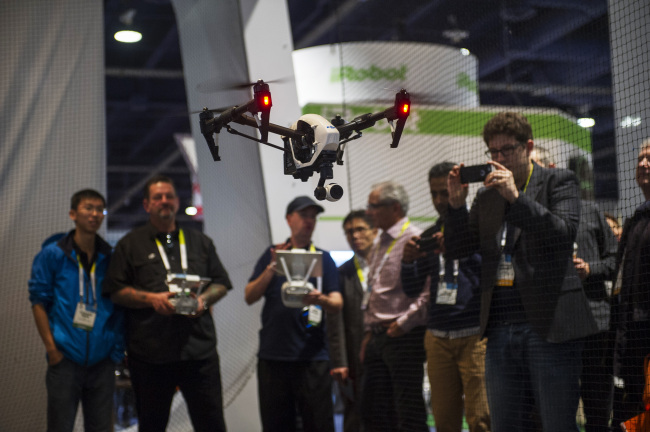Korean firms jump on drone bandwagon
Government to ease rules on unmanned aircraft
By Korea HeraldPublished : Feb. 11, 2015 - 18:38
South Korean authorities have long been reluctant to open their airspace to commercial unmanned aircraft, or drones, out of safety and security concerns.
The increasing presence of tiny drones from North Korea often creates headaches for national security officials in the South.
But a drastic shift in the long-held policy is expected to be made soon as the government plans to announce a set of eased rules governing the nascent drone industry as early as July, along with a new investment package.
The increasing presence of tiny drones from North Korea often creates headaches for national security officials in the South.
But a drastic shift in the long-held policy is expected to be made soon as the government plans to announce a set of eased rules governing the nascent drone industry as early as July, along with a new investment package.

It is not widely known that Korea is one of the leading players in the drone development field.
Korea was the second nation, after the U.S., to successfully develop the tiltrotor aircraft TR-100, an airplane with helicopter-like hovering capabilities that can take off and land vertically on an unprepared area.
The Korea Aerospace Research Institute owned the key fundamental technologies, while some 20 local firms, including Korea Aerospace Industries, LIG Nex1, Hanwha and Firstec, joined the 90 billion won ($82 million) project between 2002 and 2011.
But industry people have been calling to loosen the nation’s regulations in order to continue the enhanced R&D momentum.
“The market is still in its infancy. But eased regulations will help elevate the market size greatly,” said Oh Jae-young, an analyst at Hyundai Securities, adding Korea is the seventh-largest player in the global drone industry.
Teal Group, an aerospace and defense consulting company, predicts the market for unmanned aircrafts will surge from $11.8 billion in 2013 to $89 billion by 2023. Commercial uses, which make up less than 10 percent now, could surge to claim 60 to 70 percent of the market, it said.
Drones are a cross between a plane and a helicopter. They range in size from tiny devices that weigh less than 1 kilogram to gigantic 7 ton aircraft.
For safety reasons, drones exceeding 150 kilograms have not been allowed to fly. However, Korea is aiming to become the first country to lift the ban, pledging to play a leading role in the budding industry.
In coming years, government offices will pour 37 billion won into the new technology with the aim of realizing the technology by 2020.
For drones weighing less than 150 kilograms, the government also plans to launch experimental delivery programs within the year in partnership with local firms.
With the easing of regulations, bigger players are expected to get on board as they currently consider the drone business too risky and too expensive to bet on.
Korean Air, the nation’s largest air carrier, which also produces smaller jet planes and parts, has focused on the field since it acquired key drone technologies from KARI, the tiltrotor developer, for 1 billion won.
Its shipping unit Hanjin and firms including LG Uplus and Hanwha have been preparing to launch trial delivery services using drones.
Industry watchers say the drone of the future will not be a single gadget but a platform ― a new class of general-purpose computers that may serve various functions.
For this reason, the industry has been grabbing the attention of global tech giants like Google and Amazon, as well as Korea’s Samsung.
Samsung, under the leadership of its mobile chief Shin Jong-kyun, is rumored to have set up a new product innovation team focusing on next-generation high-tech projects such as drones, 3-D printing and robots.
Not much is known about the team, but it is expected to work independently to develop new solutions that go with the company’s other mobile devices.
Its vice chairman Lee Jay-yong was also said to have been greatly inspired by the drones displayed during the 2015 Consumer Electronics Show held in Las Vegas last month.
“Samsung is paying keen attention to new growth engine businesses beyond its saturated mobile business,” said an industry source who declined to be named. “Drones are one of the ideas to catch up with global trends.”
By Lee Ji-yoon (jylee@heraldcorp.com)
-
Articles by Korea Herald



















![[Today’s K-pop] NewJeans hits 600m Spotify streams with ‘Ditto’](http://res.heraldm.com/phpwas/restmb_idxmake.php?idx=642&simg=/content/image/2024/05/17/20240517050510_0.jpg&u=)